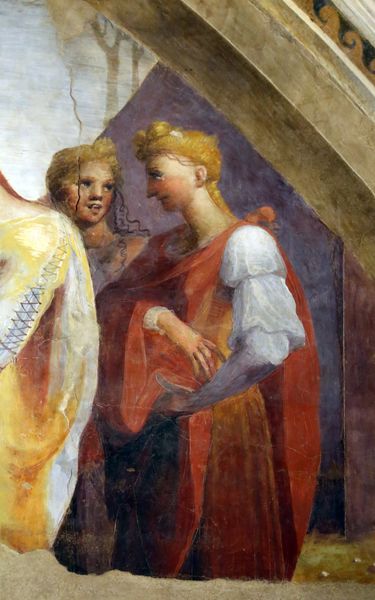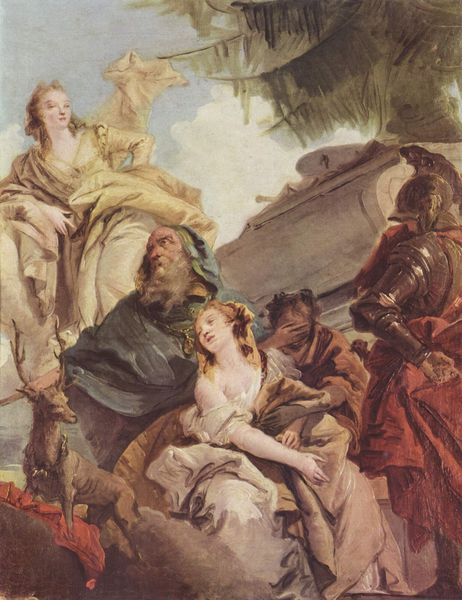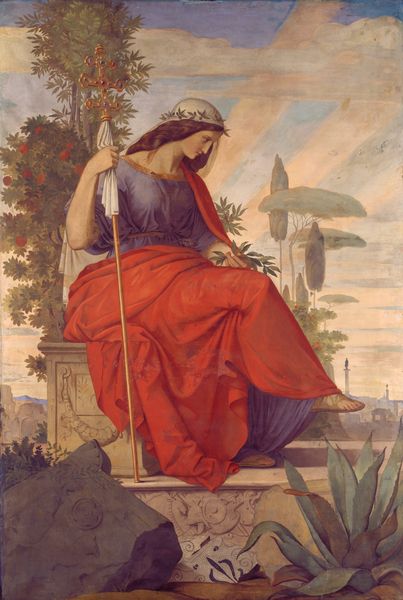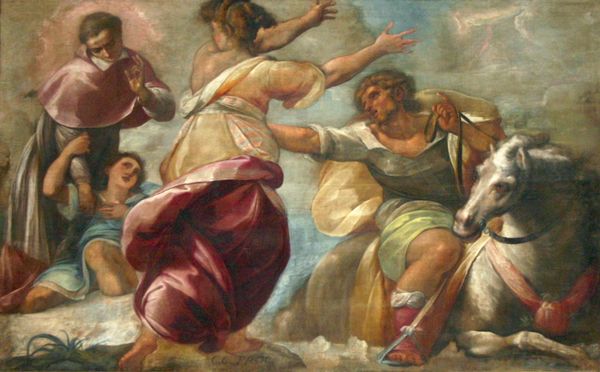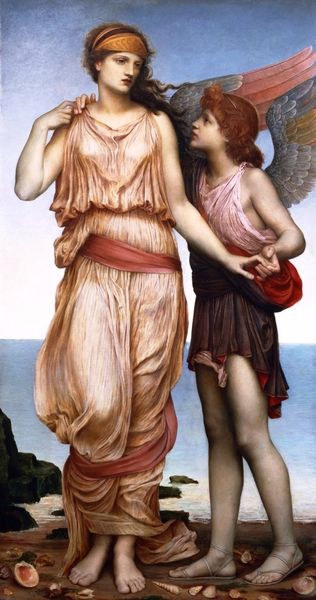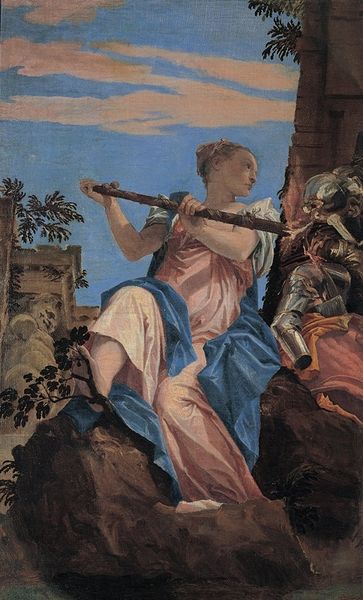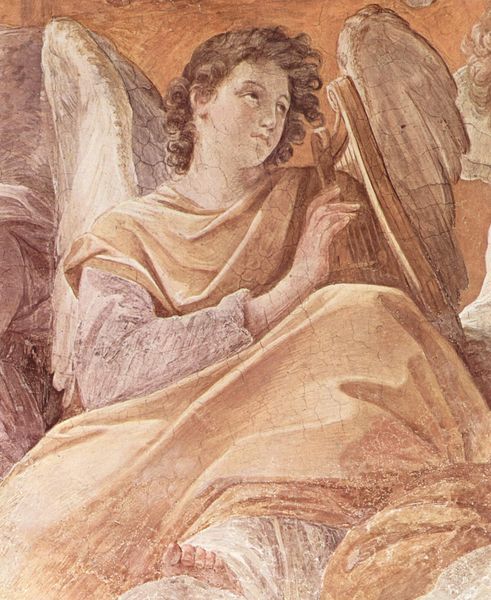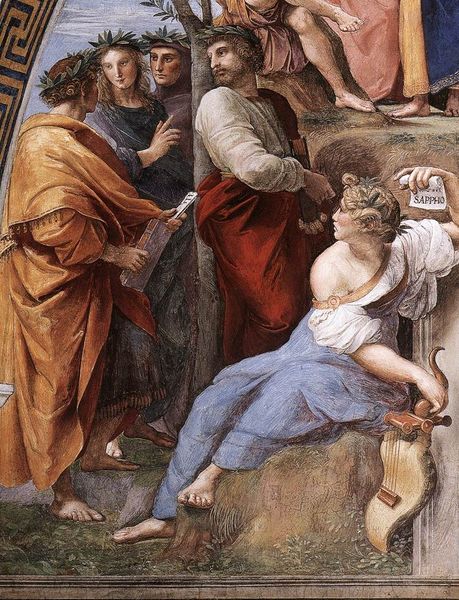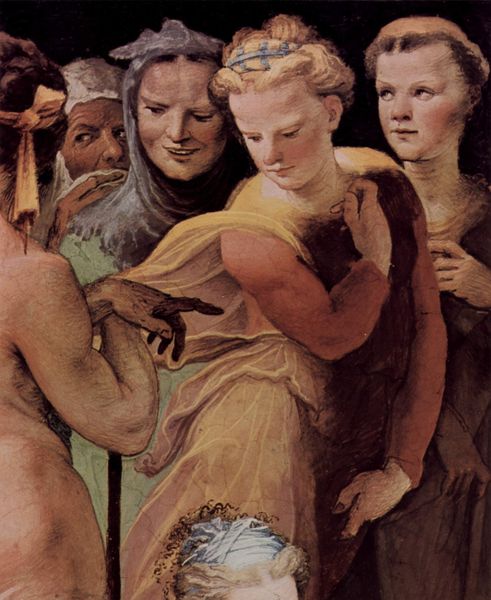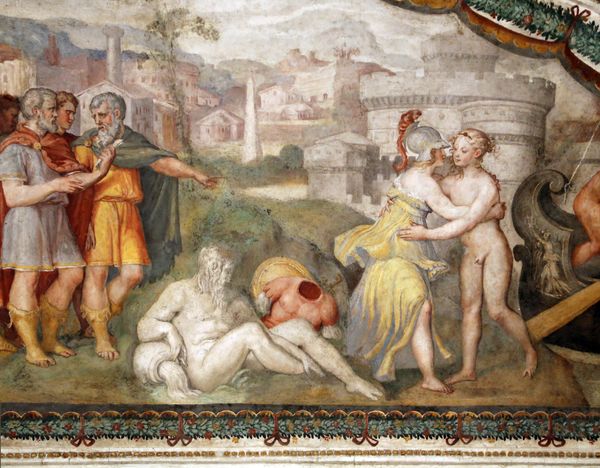
painting, oil-paint, fresco
#
painting
#
oil-paint
#
figuration
#
fresco
#
11_renaissance
#
oil painting
#
history-painting
#
italian-renaissance
Copyright: Public domain
Domenico Beccafumi likely painted this detail of “The Meeting of Anne and Joachim at the Golden Gate” in the first half of the 16th century, in Italy. It expresses a pivotal moment in Christian history. But in Renaissance Italy, such works did more than simply recount biblical stories. Commissioned for churches, chapels, and other religious institutions, they reinforced the Church’s theological doctrines as well as its social authority. Here, the delicate figures and soft colors exemplify the Mannerist style which countered the ideals of the High Renaissance. The emphasis on grace and elegance, rather than realism, served to elevate the scene beyond the everyday, imbuing it with a sense of divine purpose. Moreover, the idealized depiction of Anne and Joachim reflected contemporary notions of marital virtue and piety, reinforcing social norms and expectations. Historians often explore patronage records, religious texts, and social histories to understand the multifaceted layers of meaning embedded within such works. By analyzing the social and institutional context, we gain a deeper appreciation of art's role in shaping cultural values and beliefs.
Comments
No comments
Be the first to comment and join the conversation on the ultimate creative platform.
